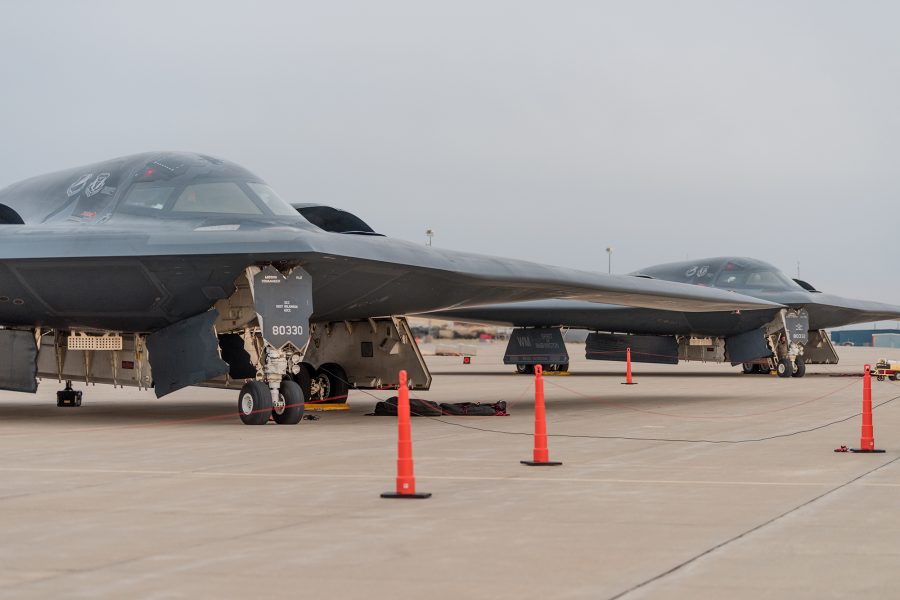The Air Force’s decision to cut a major upgrade to the B-2 bomber’s defenses shows the military is accepting near-term risk in order to free up funding for future capabilities, the head of U.S. Strategic Command told lawmakers Feb. 13.
The service’s budget proposal winds down the $3 billion defense management system upgrade, which included the largest software and hardware changes to the bomber since the aircraft went through initial engineering development. Northrop Grumman is on contract to upgrade three aircraft, with one bomber—the Spirit of Pennsylvania—having already been completed, the company said last summer.
The program had to be rebaselined last year following repeated delays, resulting in a “reduced return on investment,” according to budget documents. “In response to this shifting timeline, the Air Force realigns funding to address reliability and sustainment until end-of-life, while developing new capabilities aligned to the National Defense Strategy.”
STRATCOM boss Adm. Charles Richard told the Senate Armed Services Committee on Feb. 13 the cancellation of DMS puts the B-2 fleet at risk, though he said it’s one he “can manage.”
“That is a great example of the difficult decisions that we’re going to have to make in trading or balancing near-term risk for long-term risk,” he said. “We will accommodate that risk” with the loss of the Defensive Management System, “for the greater gain the Air Force is going to provide overall.”
The Air Force will save $327.9 million in fiscal 2021 by ending DMS, according to the budget request. The service, in its bomber roadmap plan, expects to keep the B-2 flying through the early 2030s until replaced by the B-21.


